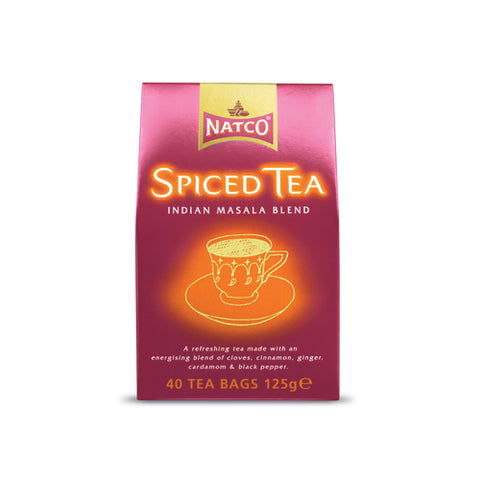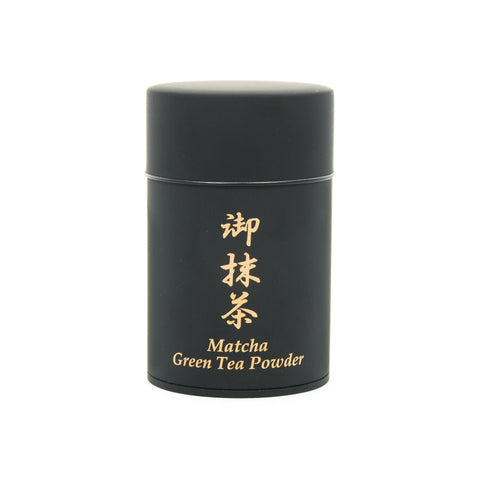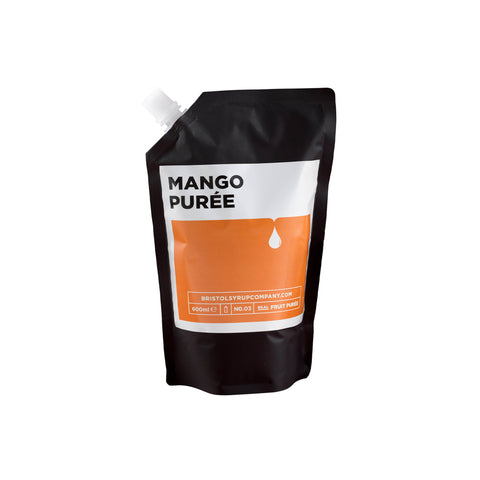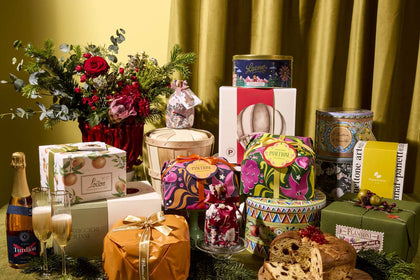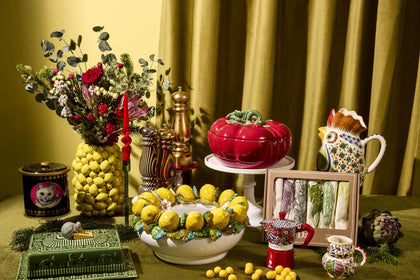Everything You Need To Know About Bubble Tea
by Nicola Lando

This dessert-like beverage from Taiwan gained a cult following in the 2000s for its wacky combinations of flavours and textures. Recognisable by the tapioca pearls it's served with, this milky tea drink tends to divide opinions when you try it for the first time. But whether you're a devoted fan or a sceptic, read on for everything you need to know about bubble tea, from its origins to current interpretations.
What is Bubble Tea?
Bubble tea is a tea-based drink that originates from Taiwan. It is also known as pearl milk tea, boba tea and QQ (onomatopoeic for the Taiwanese word for ‘chew-chew’).
The name ‘bubble tea’ originally came from the frothy bubbles that form when the drink is shaken to mix the tea, milk and flavourings together. Over time this has changed to refer to the bubble-like tapioca pearls in the bottom of the drink. These were the original ‘boba’, but now the terms bubble tea and boba tea are more or less interchangeable.

The origins of bubble tea
One particular teahouse in Taiwan, Chun Shui Tang, is generally accepted as being the birthplace of bubble tea. The founder, Liu Han-Chieh, began serving cold Chinese tea in his shop in the early 1980s. He was inspired after a visit to Japan where he saw coffee being served cold, and began experimenting with different fruits and syrups to flavour his teas. He would vigorously shake the teas over ice, which created frothy bubbles on top of the drink – the very first ‘bubble teas’.
But it was during a staff meeting in 1988 that the bubble tea we have come to know was really born. Liu Han-Chieh’s product development manager, Lin Hsiu Hui, had brought a Taiwanese dessert to the meeting. This was called fen yuan – a sweetened tapioca dessert.
At a dull moment in the meeting she decided to tip the dessert into her cup of iced Assam tea. She quickly passed it around for everyone to try – and they loved it!
The new drink became a regular on Chun Shui Tang’s menu, and in 2008, twenty years after its conception, the new-look bubble tea (or boba tea) was still making up most of their sales.
There’s an average of 380 new bubble tea shops opening per year since the invention of boba tea in 1988
Where in the world can you find bubble tea?
Bubble tea is now a worldwide phenomenon, with bubble tea bars popping up in most large towns, cities and shopping centres.
There are currently over 6,500 stores selling bubble tea around Taipei alone, and at least a further 4,070 bubble tea bars worldwide.
That’s an average of 380 new bubble tea shops opening per year since the invention of boba tea in 1988 – and that’s not even taking into account independent retailers and smaller franchises plying their trade here in the UK or over in the US, Japan and Canada, not to mention the rest of Taiwan!
Far from being a fad, it looks as though bubble tea is here to stay.
How is bubble tea drunk?
The most traditional bubble tea is simply Assam tea shaken over ice with either milk or a non-dairy creamer, and sweetened to taste. This is still one of the most popular ‘flavours’ for the boba tea version with tapioca pearls.
Since its beginnings, people have been experimenting with fruit juices or flavoured syrups and powders in their bubble tea. Some flavours have become so popular that you’re almost guaranteed to see them on the menu, no matter what bubble tea bar you visit.
The most popular milky bubble tea flavours include:
- green tea / matcha latte,
- honeydew milk tea,
- jasmine milk tea and
- taro (a sort of purple sweet potato with a nutty flavour) milk tea.
Milk bubble tea versions can also be enjoyed warm on colder days. There’s something about the sweet, creamy flavours and gummy-bear-like tapioca pearls that appeal to our childlike love of desserts.
Another well-known variation includes shaking black, green or white tea with fresh fruit juice for a fruity iced tea drink. These refreshing drinks often still come with a chewy treat in the bottom, but nata de coco jelly cubes or ‘popping boba’ – spherified fruit juice pearls that burst in the mouth – are also popular choices.
What are some of the ingredients in bubble tea
Tapioca Pearls
For many people, bubble tea just isn’t bubble tea without these chewy, gelatinous black marbles to be sucked up the straw. Quick cook tapioca pearls make these extremely easy to get right at home. The following method is perfect for quick cook black tapioca pearls.
Popping boba balls are a burst of fruity flavour! These fruity jelly-like balls sit at the bottom of your bubble tea in perfect spheres but then pop in the mouth to reveal their sweet fruit flavours
Flavours for bubble tea
Bubble tea can be flavoured with almost any sweet syrup or tea. But here are a few favourites:
Blend the strong black tea with creamy milk, and swirl with brown sugar syrup for a deep caramel sweetness. Best served with warm tapioca pearls for that signature chew.
Earthy and fragrant, matcha bubble tea is a Japanese twist on the Taiwanese classic. Whisk high-quality matcha powder into milk, add ice, and finish with tapioca pearls for a refreshing drink with a gentle bitterness that balances the sweetness perfectly.
All sunshine and fruitiness, mango bubble tea is a bright, tropical pick-me-up. Combine mango syrup or puree with green tea, and top with mango popping boba for a burst of juicy flavour.
How to Make Your Own Bubble Tea
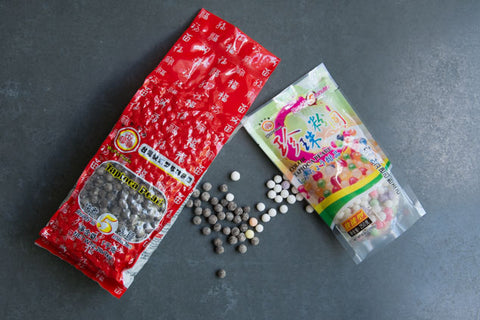
Now you know the history of bubble tea and some popular flavours, it’s time to make your own. First of all, we show you a few basics you’ll need to get you started.
Sugar Syrup
A basic sugar syrup is a must when making bubble tea.
Not only do you need it to soak the tapioca pearls in, but you can also use it to sweeten your bubble tea to taste.
Use a sugar to water ratio of 1:1 – a good starting amount is 250g white sugar and 250ml water.
- Add sugar and water to the pan over a low heat until the sugar has completely dissolved.
- Transfer the sugar syrup to a bowl or dish and place in the fridge to cool. This will make plenty of sugar syrup, enough to soak 10-20 portions of tapioca pearls, with some left over to use for sweetening your bubble tea drinks.
- You can keep any extra sugar syrup in the fridge in an airtight container for 1-2 weeks, and use in cocktails too.
It is a good idea to make this in advance of your tapioca pearls, to give it time to cool before you can add the pearls.
Sous Chef Tip: add slices of fresh ginger, citrus fruits or whole spices to infuse the syrup – your tapioca pearls will take on a subtle flavour as they soak for an extra taste sensation in your bubble tea or tapioca pudding.
Ingredients for cooked boba
- 2.5 litres (10 cups) water
- 150g (1 cup) quick cook tapioca pearls
Method for cooking
- Bring the water to a rolling boil.
- Add the pearls and wait until they rise to the surface. Cover the pan and simmer for 2-3 minutes. Remove from the heat, and sit for a further 2-3 minutes until soft. It is a good idea to cook the pearls until they feel slightly softer than you would normally like - they will firm up as they cool.
- Once cooked, transfer to a bowl of sugar syrup and allow to cool. For best results, use the pearls as soon as they’re cool.
150g (1 cup) of dried quick cook tapioca pearls makes 240g cooked boba. This is enough for 4 servings if you use approximately 60g of pearls per glass.
Classic Bubble Tea

Now you’ve got the tapioca pearls and sugar syrup, we show you how to make bubble tea! For two servings of our classic boba/bubble tea recipe you will need:
Ingredients for boba tea:
- 5g loose black tea leaves (preferably Assam) or 2 black tea bags
- 450ml hot water
- 150ml milk (you could use almond milk for a non-dairy version)
- 50ml sugar syrup, or to taste
- 120g cooked black tapioca pearls (see method above)
- Ice
- Extra Wide Straws For Boba Bubble Tea
Method for boba tea:
- Steep the tea in the hot water and leave to cool (until lukewarm is fine). If using tea bags, remove them before the next step.
- Divide the tea equally between two glasses (remember to use a strainer if you’re using loose tea) then add the milk and sugar syrup to taste. Stir gently until mixed.
- Carefully spoon the tapioca pearls into the two glasses, half in each. If you have a slotted spoon, use this to drain the sugar syrup from the pearls.
- Add a few cubes of ice.
Stick in your boba straw and enjoy!
Bubble Tea Recipes From Around The World
One of the things that has ensured bubble tea’s popularity is the sheer variety of flavours, ‘toppings’ (tapioca pearls, coconut jelly, popping boba, etc.) and combinations available.
Some places now offer drinks that contain no tea at all, but instead use coffee or even desserts for exciting new flavours. It is not uncommon in bubble tea shops across Asia to see ‘pudding’ as a possible topping – a thick, creamy dessert similar to an egg custard or blancmange.
At Sous Chef, though, we’re all about world cuisine. So these are our bubble tea ‘cuisine mash ups’ – inspired by world flavours. Bubble tea straws at the ready!
Persian Rose Milk Tea Recipe
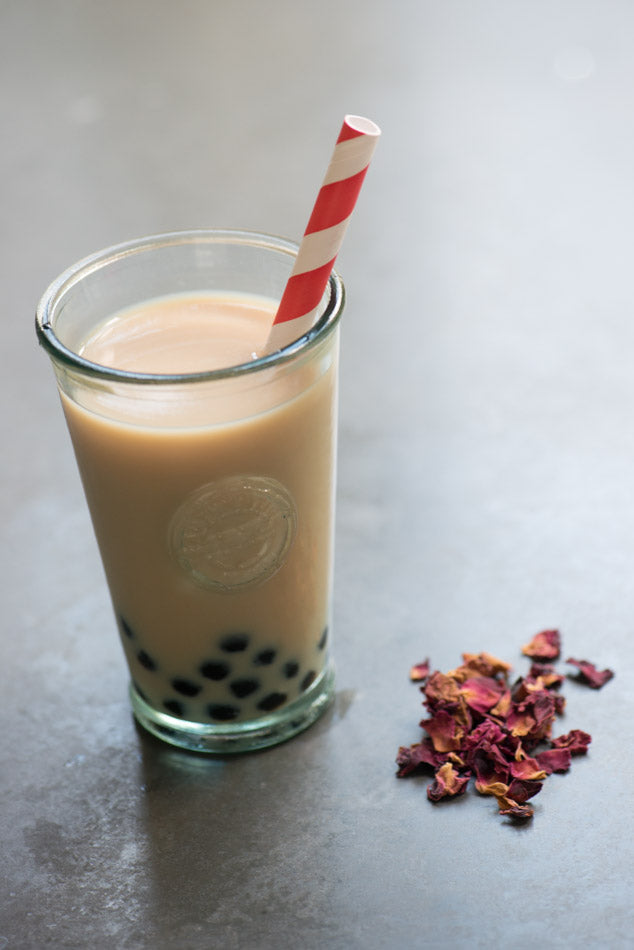
Transport yourself to the Middle East with our Persian take on a classic boba tea. The delicate rose fragrance lends an exotic touch to this fun drink. For two servings of Persian rose milk tea you will need:
Ingredients for Persian Rose Milk Bubble tea:
- 5g loose black tea leaves (preferably Assam) or 2 black tea bags
- 450ml hot water
- 150ml milk (you can use almond or soy milk for a dairy free version)
- 50ml sugar syrup
- 1-2 drops rose water per serving
- 120g cooked black tapioca pearls
- Whipped cream, rose petals and slivered pistachios (optional)
- Ice
Method for Persian Rose Milk Bubble tea:
- Steep the tea in the hot water and allow to cool (until lukewarm is fine). If using tea bags, remove them before the next step.
- Pour the tea into a glasses (remember to use a strainer if you’re using loose tea) then add the milk, sugar syrup and rose water. Stir gently until mixed.
- Carefully add the tapioca pearls.
- Add a few cubes of ice and top with a swirl of whipped cream, dried rose petals and slivered pistachios if using.
Japanese Matcha Bubble Tea Recipe
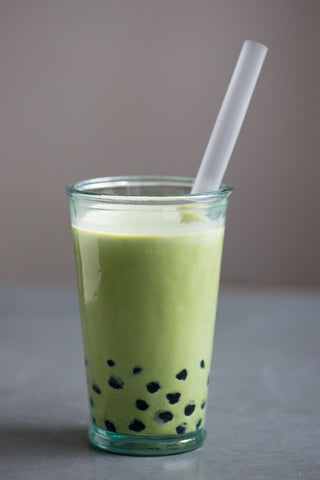
Matcha green tea has become an enormously popular drink, famed for its health benefits as well as its distinctive, earthy flavour. Matcha has been a Japanese favourite for years, and is often used to flavour chocolates, cakes and custards. In chilled latte form it makes a great boba tea! For two servings of Japanese matcha bubble tea you will need:
Ingredients for Matcha Bubble Tea:
- 2 tbsp. matcha green tea powder
- 500ml milk (you can use almond or soy milk for a dairy free version)
- 4 tbsp. double cream
- 2 tbsp. sugar syrup (you can add more if you like it sweeter)
- 120g cooked black tapioca pearls
- Ice
Method for Matcha Bubble Tea:
- Measure out the milk in a jug, then add the matcha powder. Whisk vigorously until the matcha powder has dissolved. Stir in the double cream.
- Add the sugar syrup and taste. Add more if needed.
- Divide the tapioca pearls between two glasses.
- Pour over the matcha latte and add a few ice cubes.
Mexican Hibiscus Cooler Bubble Tea Recipe
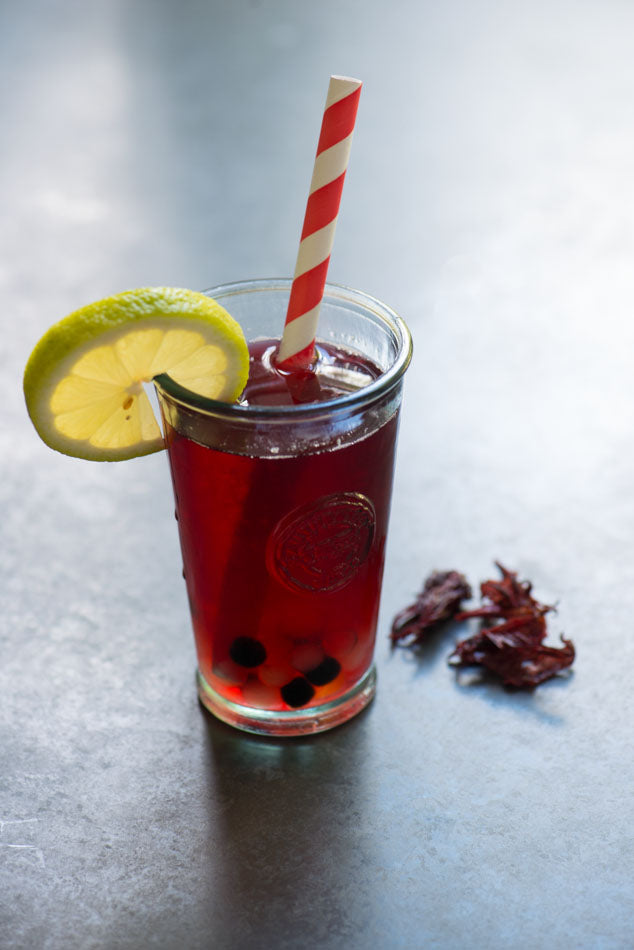
On a hot summer’s day, you need something refreshing – and this Mexican-inspired hibiscus cooler is just the thing. The chewy tapioca pearls give a balanced sweetness to the sharp, citrus notes of the hibiscus and lemon. For two servings of Mexican hibiscus cooler you will need:
Ingredients for Hibiscus Bubble Tea:
- 10g dried hibiscus flowers
- 250ml hot water
- 2 tbsp. lemon juice
- 4 tbsp. sugar syrup
- 400ml cold water
- 120g cooked coloured tapioca pearls
- Ice
Method for Hibiscus Bubble Tea:
- Steep the hibiscus flowers in the hot water and allow to cool (until lukewarm is fine).
- Once cool, strain the deep pink hibiscus ‘tea’ into a jug. Add the lemon juice, sugar syrup and cold water and stir to mix.
- Pour into two glasses then add the tapioca pearls and a few ice cubes. Garnish with a slice of lemon.
Brazilian Mojito Iced Bubble Tea Recipe
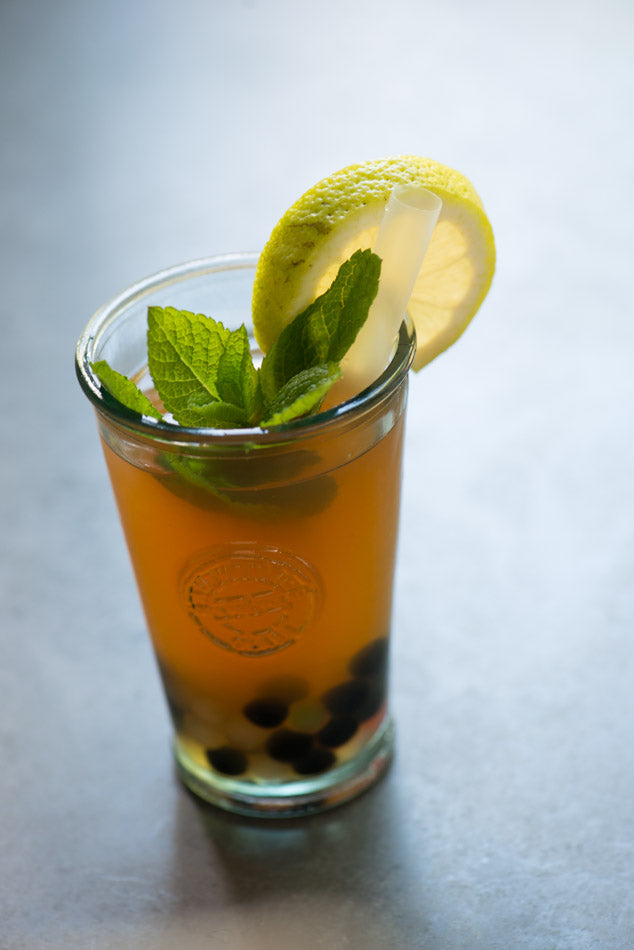
With the Rio de Janeiro Olympics just around the corner, all things tropical and Brazilian are on trend this summer. Mojitos are the classic Brazilian cocktail, so in the spirit of bubble tea we’ve created an alcohol-free iced tea version to quench your thirst. For two servings of Brazilian mojito iced tea you will need:
Ingredients for Mojito Bubble Tea:
- 5g loose black tea leaves or 2 black tea bags
- 300ml hot water
- 40ml lime juice
- 40ml sugar syrup
- 200ml cold water
- 15g fresh mint leaves, plus extra to garnish (optional)
- 120g cooked coloured tapioca pearls
- Ice
- Lime slices to garnish (optional)
Method for Mojito Bubble Tea:
- Steep the tea in the hot water and allow to cool (until lukewarm is fine). If using tea bags, remove them before the next step.
- Once cool, pour the tea into a jug (remember to use a strainer if you’re using loose tea) then add the lime juice and sugar syrup.
- Tear and crush the mint leaves a little and add to the jug. Give it a stir and leave the mint to infuse for a minute or two.
- Pour the tea mixture into two glasses, straining out the mint leaves. Top up with the cold water, then add the tapioca and a few ice cubes.
- Garnish with a sprig of fresh mint and a slice of lime.
Indian Saffron Milk Tea Recipe
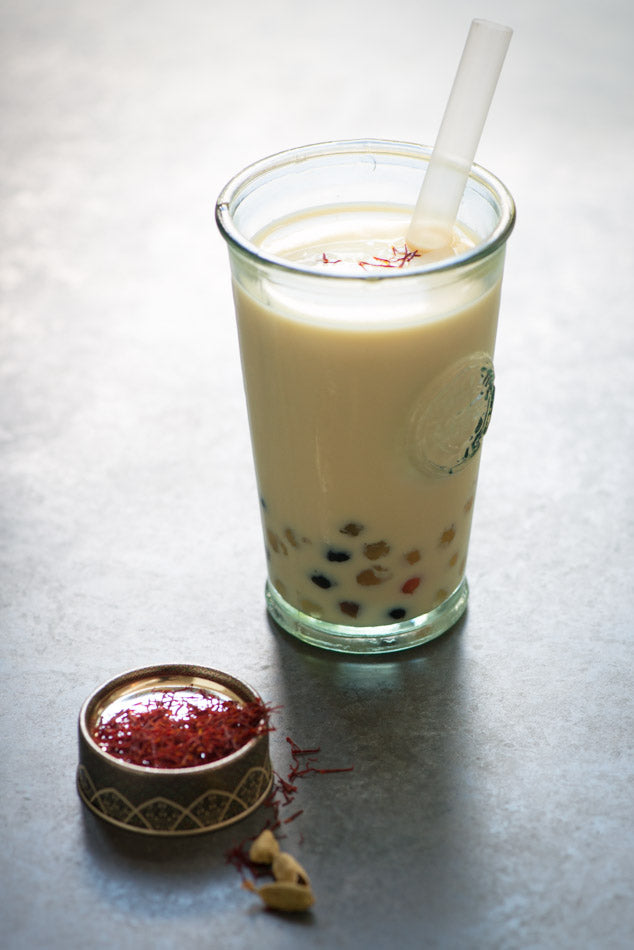
Saffron milk, or kesar doodh is a traditional Indian drink. As well as being enjoyed for its rich taste, the saffron milk is said to have medicinal properties. Try our bubble tea version as alternative to a dessert – the creamy, fragrant drink with chewy tapioca pearls is like having a pudding in a glass! For two servings of Indian saffron milk tea you will need:
Ingredients for Saffron Milk Bubble Tea:
- approx. 2g loose black tea leaves or 2 black tea bags
- 180ml hot water
- 70ml (half a tin) sweetened condensed milk
- 300ml semi skimmed milk
- pinch of saffron
- ground seeds of 2-3 green cardamom pods
- 120g cooked black tapioca pearls
Method for Saffron Milk Bubble Tea:
- Steep the tea in the hot water and allow to cool (until lukewarm is fine).
- Add the condensed milk, milk, saffron and ground cardamom to a saucepan. Heat on a medium heat for around 15-20mins to allow the saffron and cardamom to infuse. Stir regularly to stop the milk burning. Remove from the heat to cool – your milk mixture should be a custard-yellow colour.
- Once the saffron milk is cool, add the tea (remember to strain out the tea leaves/ remove the tea bags) and stir.
- Divide the tapioca pearls equally between three glasses. Carefully pour over the saffron milk tea and enjoy!
Sous Chef Tip: add an ice cube or two in the summer for a creamy cooler. Or make this drink in the winter time and gently warm through the saffron milk tea before serving – this makes a super comforting drink before bed!
How to Make Fen Yuan
Why not try your hand at making the sweet tapioca dessert that started it all? You could even add it to your iced tea like Lin Hsiu Hui for a taste of the ‘original’ boba tea! To make your own fen yuan you will need:
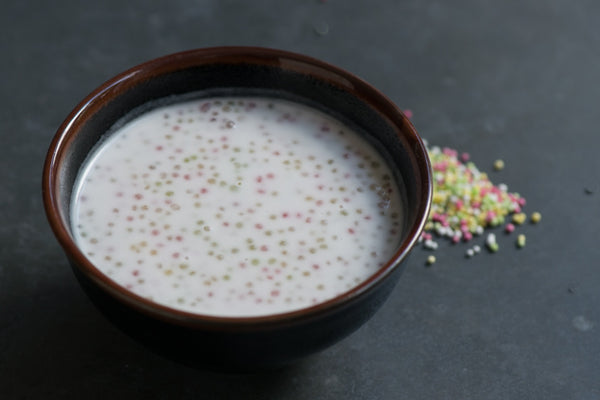
Ingredients for Fen Yuan:
- 75g small tapioca pearls
- 1 can of unsweetened coconut milk
- Brown sugar or sugar free sweetener to taste (Chinese rock sugar is more traditional for this dessert – it’s a little harder to fine tune sweetness, but gives a subtler, less treacly flavour than brown sugar).
Method for Fen Yuan:
- Cook the tapioca pearls according to the instructions. As a general guide, bring a large pan of water to the boil. Add the pearls and wait until they rise to the surface. Reduce the heat to simmer and cook until the pearls turn soft and slightly gelatinous, stirring regularly.
- Once cooked, drain the tapioca pearls.
- Add the can of coconut milk to a pan over a low heat and add the tapioca pearls. If you’re using Chinese rock sugar, add a lump or two now and stir until dissolved.
- At this stage taste the pudding and add brown sugar (or more rock sugar) a little at a time until it is sweet enough for your tastes. Stir well each time you add sugar.
- If you prefer a soupier consistency, add a little water. Chill before serving.
This recipe makes two small servings. Top with chunks of fresh honeydew melon or mango for a fruity lift.
Sous Chef Tip: Deco Relief concentrated flavours are an easy way to vary this dessert. Try a drop of lychee flavour for a subtle, sweet fragrance, or a drop of passion fruit flavour for a tropical twist.
What's Next for Bubble Tea?
How do you make a drink that’s already an exciting fusion of flavours and textures even better? Introduce it to cocktails, of course! And in America right now, that’s exactly what some people are doing. Like Boba 7, a bubble tea bar nestled in the back room of a Thai restaurant in Los Angeles. The owner and house boba tea mixologist, Elton Keung, is creating exciting boba cocktails using everything from beer to Korean soju, Kahlua to Crème de Menthe and everything in between. With a menu also offering a range of non-alcoholic concoctions, clever puns and pop culture references, they’ve pitched themselves perfectly to the big kids and Comic-Con goers.
Then there’s Boba Guys, a small chain with bubble tea shops in San Francisco and New York. They put the emphasis on great local and organic ingredients, and they make all of their own jellies (an alternative topping) and flavoured syrups in store. This is bubble tea for the hipster generation – sleek and minimalist stores furnished in white, pale wood and brushed metal serve a wide range of premium loose-leaf teas with a choice of organic whole milk, almond milk or organic soy milk. Not an artificial powder or cutesy Asian cartoon character in sight (there’s a rather smart-looking aardvark instead. Obviously).
Boba 7 and Boba Guys have taken very different approaches to the bubble tea phenomenon, but there can be no doubt they’ve each cornered important sectors of the market. Boba Guys and Elton Keung from Boba 7 have tapped into the mainstream consciousness and used their creativity to keep bubble tea new and exciting. As a drink, bubble tea is hugely versatile, allowing for constant innovation and adaptation – and this will surely keep bubble tea alive for years to come.

About the author
Nicola is co-founder and CEO at Sous Chef. She has worked in food for over ten years.
Nicola first explored cooking as a career when training at Leiths, before spending the next decade in Finance. However... after a stage as a chef at a London Michelin-starred restaurant, Nicola saw the incredible ingredients available only to chefs. And wanted access to them herself. So Sous Chef was born.
Today, Nicola is ingredients buyer and a recipe writer at Sous Chef. She frequently travels internationally to food fairs, and to meet producers. Her cookbook library is vast, and her knowledge of the storecupboard is unrivalled. She tastes thousands of ingredients every year, to select only the best to stock at Sous Chef.
Nicola shares her knowledge of ingredients and writes recipes to showcase those products. Learning from Sous Chef's suppliers and her travels, Nicola writes many of the recipes on the Sous Chef website. Nicola's recipes are big on flavour, where the ingredients truly shine (although that's from someone who cooks for hours each day - so they're rarely tray-bakes!).

